Our definitive guide on what secondary cultivators are, how they are used & the different types.
Cultivators have been around since ancient times. The earliest forms of cultivators were hoes and mattocks, used for weed control as early as 1800 BC.
Cultivation in Canada, 1943
.jpg?width=500&name=Farm._Tractor_-_Farm%2c_Ville_LaSalle_BAnQ_P48S1P08968%20(1).jpg)
While the principle of disturbing the top layer of the soil in order to make the ideal seedbed and/or growth area for the chosen crop remains the same, today's cultivators are very different from the types of simple machines the ancients used.
What Is a Cultivator?
A cultivator is a machine that disturbs the top surface of the soil to either prepare the soil into a smooth, loose, aerated seedbed, and/or to kill weeds. The term "cultivator" is very broad, and can be broken down into the 5 categories further below.
Harrows Are Cultivators
At first glance, it may seem that cultivators and harrows do the same job, however each has it's subtle points of difference. All harrows are cultivators, but not all cultivators are harrows. The definition of each word is below:
Cultivator: a mechanical implement for breaking up the ground and uprooting weeds.
Harrow: a cultivating tool set with spikes, teeth, or disks used for breaking up and smoothing the soil.
Cultivators which break up the soil around the crop in order to kill weeds (such as row crop cultivators) are not harrows, however disc, tine & power harrows are all cultivation machines. Harrows are typically used for preparing the ground before planting, and are designed to disturb the soil consistently all along the full working width.
Why Cultivate?
Cultivation is the practice of working, or tilling the soil to increase aeration & water flow, and to destroy weeds and/or crop residue through uprooting or disruption of photosynthesis through burying.
Increased aeration and looser soils have many benefits, from increased growth & better plant resilience during drought, to reduced water ponding time after heavy rain.
Read about Subsoil Aeration & its benefits in depth here
Cultivation is all about creating the ideal seedbed for your crop; the sort of ground conditions you are faced with & the desired crop will determine the best cultivation setup for you.
5 Types Of Cultivators
1. Disc Harrows
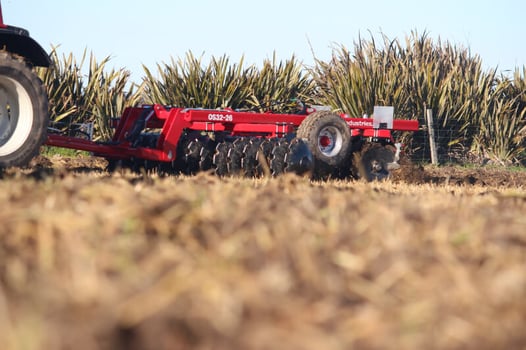
Although cultivators are typically secondary cultivation machines, disc harrows (known simply as discs) with high weight per blade (such as the Rata Offset Discs) may also be used for primary cultivation (breaking in new ground).
Disc Harrows are a set of discs, mounted in "gangs" underneath a (usually heavy) frame, and pulled by a drawbar, or mounted to the 3 point linkage in the case of smaller speed discs.
These are ideal for rocky ground where a robust implement is required to stand up to the conditions, or cutting into ground that is heavily thatched where the blades can slice through the stringy plant matter.
There are 3 main types of Disc Harrows, the most popular being Offset Discs, followed by Tandem Discs, and speed discs.
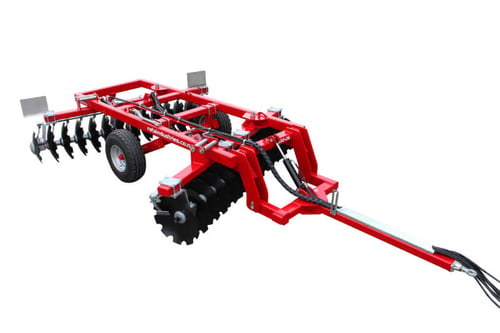
Offset Discs are the most cost effective option relative to width when it comes to discs, with the least complexity. Their basic design has been around for 80-90 years, and this makes the components and wearing parts competitive and readily available.
Rata Offset Discs are among the best offered in NZ, with frame strength being a key focus. The design includes features like huge 50mm high tensile pivot pins, 9mm wall RHS, large 40mm square 4140 grade axles and triple sealed roller bearings just to name a few.
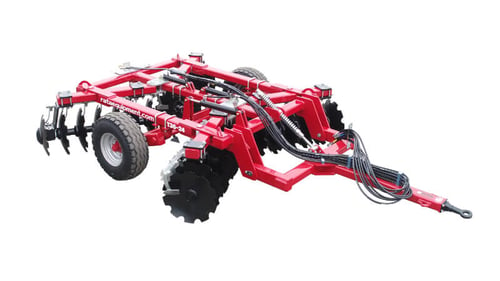 Tandem Discs are very similar to Offset Discs, but they have the gangs set up in an X shape. When turning with Offset Discs, the shape of the disc blades means that they ride up and out of the ground, or dig in too deeply.
Tandem Discs are very similar to Offset Discs, but they have the gangs set up in an X shape. When turning with Offset Discs, the shape of the disc blades means that they ride up and out of the ground, or dig in too deeply.
The Tandem Discs rectify this problem by mounting the discs in an X configuration, keeping the implement in the ground working, even when turning.
Rata Tandem and Offset Discs both offer full hydraulic cut adjustment as standard.
Speed discs are a relatively new development compared to the other two variations. They require a special type of disc blade and different bearing and mounting setups to the Offsets or Tandems in order to be suited to be pulled at high speeds without causing excessive wear and tear
In light or sandy soils discs may also be used as a finishing tool where a finer seedbed would dry out and blow away.
Tine & Chain harrows are mostly a finishing tool. They are a pattern of small tines and chains that are designed to break up and knock down the larger clods left behind by passes from larger & heavier cultivation gear, such as spring or rigid tine cultivators or disc harrows. These are sometimes towed behind discs or tine cultivators as shown in the picture.
3. Power Harrows / Rotary Tillers
Power Harrows differ from the other types of cultivators in that they are PTO driven. They do not rely on the forward speed of the tractor to till the soil, bladed rotors spin vertically, usually using a system of gears from a central gearbox, and this works the soil into a fine seedbed.
Rotary tillers do a similar job to power harrows, but instead of having vertically mounted tines, they have a drum with tines attached which spins around. This does cause some soil inversion in the top layers, as the soil is dug up with every rotation of the drum.
The downside to power harrows & rotary tillers is the amount of moving parts and the PTO horsepower requirement, which can make operation with a lower hp tractor painfully slow.
4. Spring Tine Cultivators (Maxitills & Grubbers)
The Rata 812 Fully Trailing Maxitill
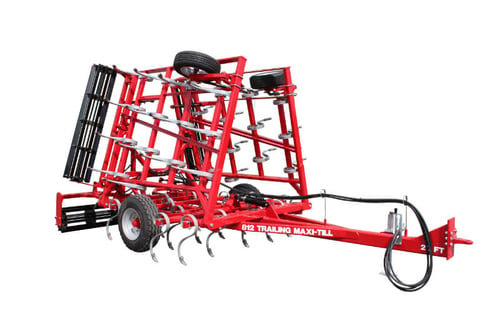 Perhaps the type of cultivator that everyone thinks of, the spring tine cultivator is a simple and effective means of seedbed preparation that has proven it's worth for decades.
Perhaps the type of cultivator that everyone thinks of, the spring tine cultivator is a simple and effective means of seedbed preparation that has proven it's worth for decades.
From 15 to 70 spring steel tines with either cast or reversible points are fitted to these machines, or 1 inch coil tines for the grubbers, with reversible points.
Floating wings and land wheels make a clean, tidy, smooth & consistent seedbed finish for maximum seed germination & growth on the machines this is applicable to, such as the 812 Fully Trailing Maxitill & 813 Centrefold 3PL Mounted Maxitill.
Rata offers a full range of spring tine cultivators. From 25ft Fully Trailing & Folding Maxitills to 1.5m 3PL Mounted Vineyard Cultivators and various sizes of Grubbers, Rata have you covered.
This is also the category that most row crop cultivator fits into. Row crop cultivation equipment is designed to till the soil between the rows of crops, both aerating it and also uprooting and killing any weeds.
Choosing which spring tine cultivator is right for you can be a daunting task as there are several options, and these depend on how fine you want the seed bed, how much trash is lying around & tractor size.
The Rata 203 Centrefold 3PL Mounted Maxitill
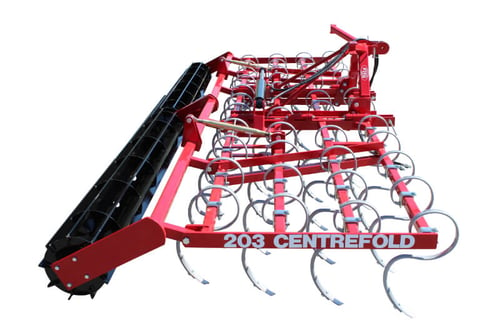 Here are some tips to help decide which is the best Maxitill for you:
Here are some tips to help decide which is the best Maxitill for you:
1. The larger and more heavy duty models with 50mm tines such as the 812 (Trailed) and the 813 (3PL Mounted) are suited to harsher more trashy conditions. To give more trash clearance the tines are spaced further apart, resulting in a seedbed that is less fine than the 103 (Trailed) or 203 (3PL Mounted) models.
2. The 103 and 203 have lighter tines than the 812 or 813, but they are spaced closer together. This results in a finer seedbed, allowing for less passes, although the cultivator itself has less trash clearance.
3. Tractor Horsepower is an important consideration when selecting a cultivator. For our cultivators with 50mm tines, allow 3 hp per tine. For models with 32mm tines, allow 2 hp per tine, and finally for the grubbers with their 1 inch coil tines we allow 4 hp per tine. These figures are ballpark estimates only, actual required hp will depend on soil conditions.
Click here to see more info on choosing the right cultivator for you
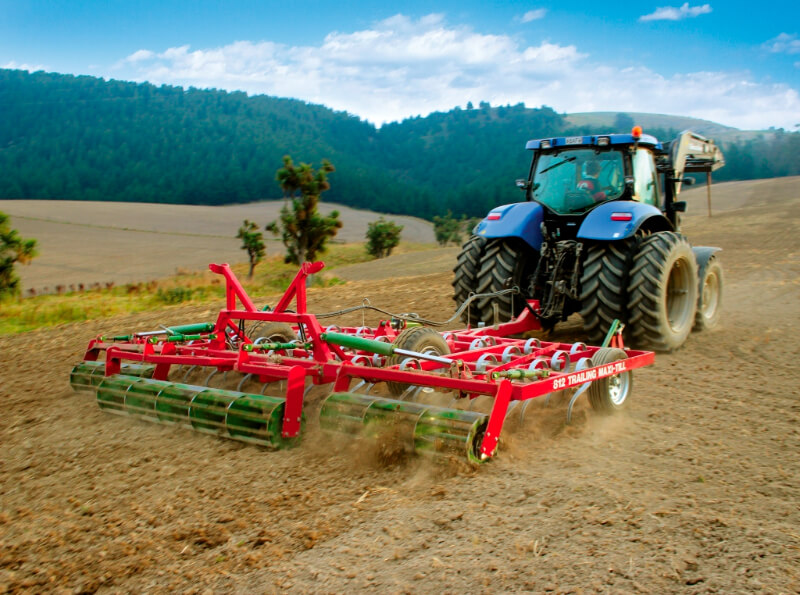
5. Rigid Tine Cultivators (Chisel Ploughs)
Rigid tine cultivators, otherwise known as Chisel Ploughs, have a rigid leg attached to a main frame, usually with a spring protection system of some sort.
They are used for deeper tilling than spring tine cultivators, and do not invert the soil. Chisel ploughs may be used as an alternative for ploughs as they can loosen the soil to a similar depth.

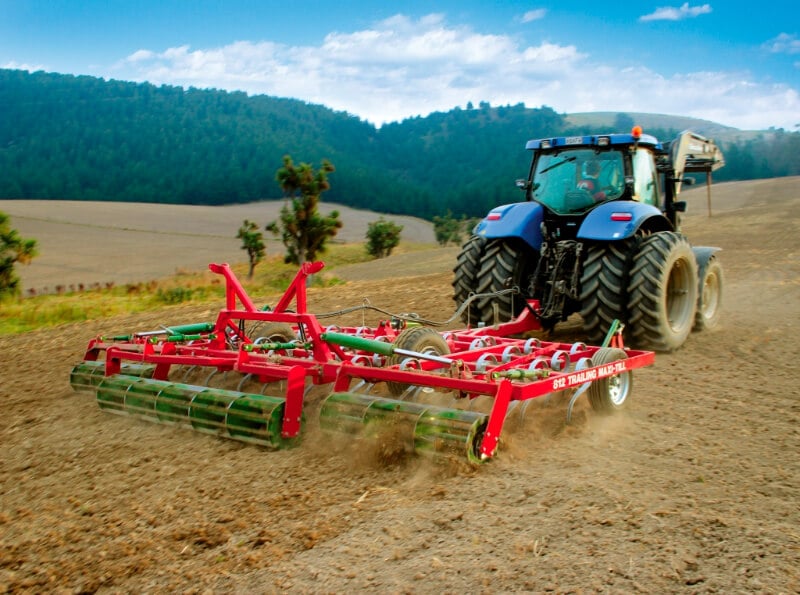
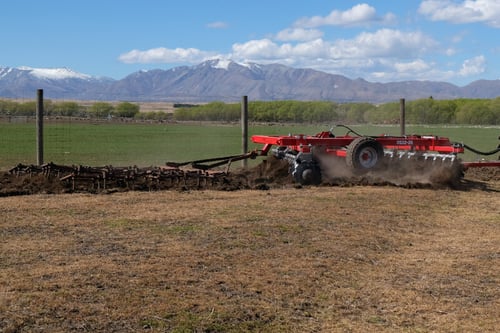
.webp)